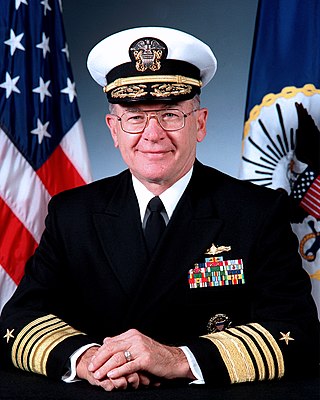
Vernon Eugene Clark is a retired admiral who served as the Chief of Naval Operations (CNO) of the United States Navy. He retired on July 22, 2005, making his tenure of five years the second-longest serving CNO behind Arleigh Burke. He currently sits on the board of directors of Raytheon and SRI International. In November 2009, he was selected along with former Secretary of Veterans Affairs Togo West by Defense Secretary Robert Gates to lead the military investigation into the Fort Hood massacre.

Jeremy Michael Boorda was a United States Navy admiral who served as the 25th Chief of Naval Operations. Boorda is notable as the first person to have risen from the enlisted ranks to become Chief of Naval Operations, the highest-ranking billet in the United States Navy.

Raymond Ames Spruance was a United States Navy admiral during World War II. He commanded U.S. naval forces during one of the most significant naval battles that took place in the Pacific Theatre: the Battle of the Philippine Sea. He also commanded Task Force 16 at the Battle of Midway, comprising the carriers Enterprise and Hornet. At Midway, dive bombers from the Enterprise crippled sank four larger carriers of the Imperial Japanese Navy. Most historians consider Midway the turning point of the Pacific War.

Edmund Peter Giambastiani Jr. is a retired United States Navy admiral who served as the seventh vice chairman of the Joint Chiefs of Staff from 2005 to 2007. He retired in 2007, after 37 years of service.

Gary Roughead is a former United States Navy officer who served as the 29th Chief of Naval Operations from September 29, 2007 to September 22, 2011. He previously served as Commander, United States Fleet Forces Command, from May 17 to September 29, 2007. Prior to that, Roughead served as the 31st Commander, United States Pacific Fleet from July 8, 2005, to May 8, 2007. He retired from the U.S. Navy after 38 years of service.

William Freeland Fullam was an officer in the United States Navy during World War I.
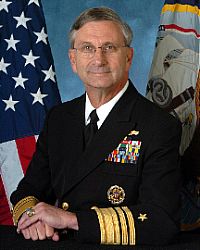
Vice Admiral William Douglas Crowder retired from the United States Navy in November 2009 after serving as the Deputy Chief of Naval Operations for Operations, Plans and Strategy (N3/N5). Crowder was the 45th commander of the United States 7th Fleet.

Thomas Paul "Tom" Meek was a United States Navy officer for 31 years, retiring at the rank of two-star Rear Admiral.

Mark William Balmert is retired United States Navy rear admiral. His last command was the joint Navy and Marine Corps Expeditionary Strike Group 3. He retired from the Navy in 2008 and joined Northrop Grumman as a Strategic Senior Consulting Manager.

Admiral Robert Joseph Natter is a retired United States Navy admiral who served as Commander, U.S. Atlantic Fleet/Fleet Forces Command from 2000 to 2003.
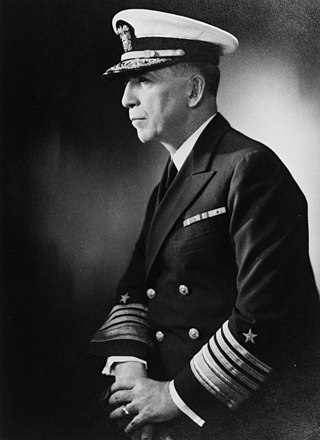
Royal Eason Ingersoll was a United States Navy four-star admiral who served as Commander in Chief, U.S. Atlantic Fleet (CINCLANT) from January 1, 1942 to late 1944; Commander, Western Sea Frontier from late 1944 to 1946; and Deputy Commander in Chief, U.S. Fleet/Deputy Chief of Naval Operations (DCOMINCH/DCNO) from late 1944 to late 1945.
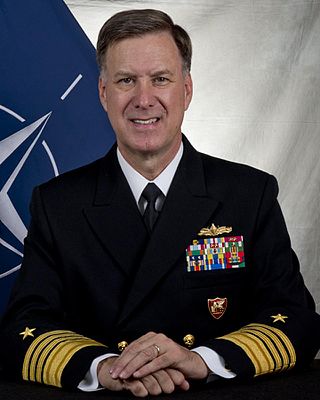
Mark E. Ferguson III is a retired United States Navy admiral who last served as Commander, United States Naval Forces Europe, United States Naval Forces Africa and Allied Joint Force Command Naples. Ferguson previously served as the 37th Vice Chief of Naval Operations from August 22, 2011 to July 1, 2014. Prior to that, he served as the 55th Chief of Naval Personnel and Deputy Chief of Naval Operations. He also served as chief of legislative affairs and assistant commander for distribution, Navy Personnel Command. He retired from active duty on July 1, 2016.
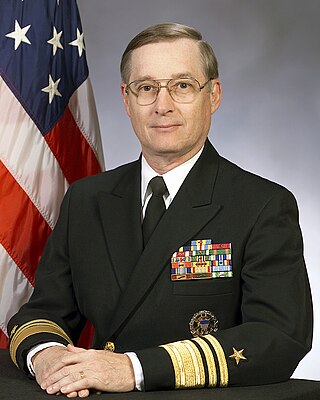
Vice Admiral Lowell Edwin Jacoby, USN was the 14th director of the Defense Intelligence Agency. Previously he was Director for Intelligence (J-2) Joint Staff in the Office of the Chairman of the Joint Chiefs of Staff from 1999 to 2002, and the Director of Naval Intelligence and commander, Office of Naval Intelligence from 1997 to 1999. He was the Director for Intelligence, U.S. Pacific Command from 1994 to 1997 and Commander, Joint Intelligence Center, Pacific from 1992 to 1994. He was Assistant Chief of Staff, Intelligence, U.S. Pacific Fleet from 1990 to 1992.

Carrier Strike Group 2 is a U.S. Navy carrier strike group, tracing its history originally to 1931. The aircraft carrier USS Dwight D. Eisenhower is the strike group's current flagship. As of Aug 2020, other units assigned to Carrier Strike Group 2 included the nine squadrons of Carrier Air Wing Three; the Ticonderoga-class cruiserUSS Philippine Sea (CG-58); USS Monterey (CG-61), USS Vella Gulf (CG-72) and the Arleigh Burke-class destroyersUSS Mitscher (DDG-57), USS Laboon, USS Mahan (DDG-72), and USS Thomas Hudner (DDG-116) from Destroyer Squadron 22.

Carrier Strike Group 14 was a U.S. Navy carrier strike group. The group was for some time the only U.S. carrier strike group that did not have an assigned aircraft carrier or carrier air wing. As of December 2010, it directed the cruisers USS Gettysburg (CG-64) and USS Philippine Sea (CG-58). Carrier Strike Group 14 was seemingly last based at Naval Station Mayport. Without a carrier flagship, it did not conduct the typical deployments of other carrier strike groups; instead, its two cruisers made independent voyages.

Arthur Cayley Davis was an admiral of the United States Navy. His career included service in World War II and the Cold War. He was a pioneer of dive bombing.
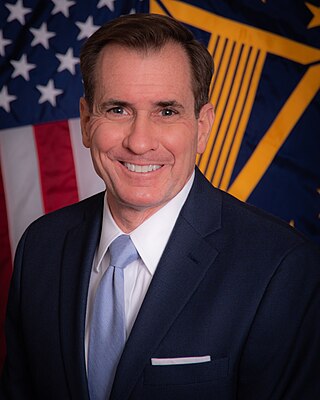
John Francis Kirby is a retired rear admiral in the United States Navy serving as Coordinator for Strategic Communications at the National Security Council in the White House since late May 2022. He previously served as Pentagon Press Secretary for the first year and a half of the Biden Administration, and worked as a military and diplomatic analyst for CNN from 2017 to 2021. He served in the Obama administration as the spokesperson for the United States Department of State from 2015 to 2017.

Philip Scot Davidson is a retired four-star admiral in the United States Navy who last served as the 25th commander of United States Indo-Pacific Command from May 30, 2018 to April 30, 2021. He previously served as the commander of United States Fleet Forces Command and United States Naval Forces Northern Command from 2014 to 2018. Davidson is from St. Louis, Missouri, and is a 1982 graduate of the United States Naval Academy. He retired from the U.S. Navy effective May 1, 2021.

Bernard Franklin Roeder was a decorated officer in the United States Navy with the rank of vice admiral, who held many important assignments, including commander in chief of United States First Fleet and Director of Naval Communications. He also served as first director of the Naval Security Group.

Rear Admiral Michael A. Brookes is an active duty United States Navy officer and career intelligence officer who is currently serving as Director of Intelligence, J2, at U.S. Strategic Command. Prior to his current assignment, Brookes was the deputy commander, U.S. Fleet Cyber Command/U.S. 10th Fleet.



















